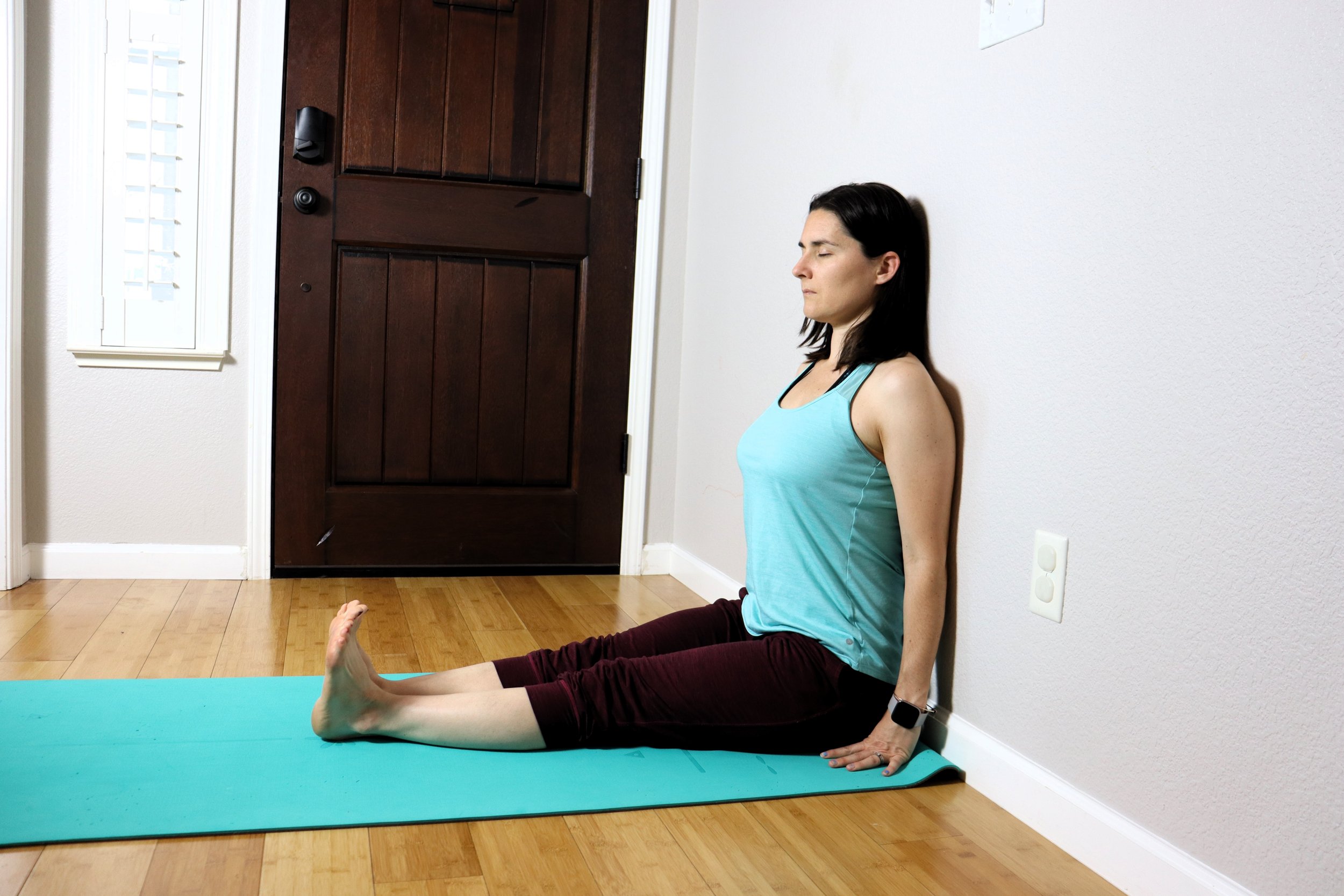Yoga Poses for Leg Length Discrepancy: Staff Pose (Dandasana)
/Staff Pose (Dandasana) is a basic yoga pose that is one of the best for highlighting postural patterns and strengthening back and leg muscles in those with body asymmetries like scoliosis and leg length discrepancies.
While the instructions are simple, it can be quite challenging to find a neutral spine position (as described below). In addition, Staff Pose requires you lengthen the spine up against gravity, developing more strength in the core and postural muscles.
I like this pose because it is a foundational pose, whose shape you will replicate in other poses, like Standing Half Forward Fold (Ardha Uttanasana). The position of this pose also provides you a lot of feedback regarding your alignment, which is key for working with body asymmetries and back and leg conditions.
How to Do It
1. Sit on the floor with your legs extended in front of you, together or hip-width apart. (I prefer hip-width positioning, because I feel less pinching and compression in my lower back and SI joints.)
2. Pull the flesh of your buttocks outwards, so you can rest more directly onto your sitting bones.
3. Press down through your thighs and extend through your heels so you feel grounded and lengthening through the backs of your legs.
4. Press your hands down into the mat next to your hips to lengthen through the spine and widen the front of your chest.
5. Lift the crown of your head and look forward.
6. Hold for about 30 seconds, focusing on your breath and the sensation of lengthening, then release.
Things to Watch for
staff pose with collapsed/rounded lumbar
If your lower back rounds or collapses, sit up on a blanket (or several), trying to find a neutral lumbar curve. What is neutral? A lumbar curve is a slight inward curve in your lower back. If you are laying down on your back, you can usually notice it because there is a small gap between your low back and the ground. Finding a neutral curve is important in this pose, especially because neutral might not be natural.
Arm and torso lengths vary. Notice whether your hands can fully press into the ground. You may need to add blocks under your hands if you have a long torso or shorter arms. Pressing into your hands is important to help you find the lifting sensation in this pose.
For those with scoliosis and leg length discrepancies, notice if one hip is higher than the other. On the higher side, see if you can pull more booty flesh out to the side. If this doesn’t even out your hips, place a small towel (folded if needed) under the sitting bone of the lower hip.
Another helpful option is to do this pose with your back against the wall. This will help support the lift in your back and provide feedback of which parts of your back and shoulders press into the wall. Using that information, gently try to find alignment and even pressure between both sides of your back, hips, and legs.
Other posts in the Yoga Poses for Leg Length Discrepancy Series:
Extended Hand-to-Big-Toe Pose (Utthita Hasta Padangusthasana)
Triangle Pose (Trikonasana)
Tree Pose (Vrksasana)
Wide-Legged Forward Fold (Prasarita Padottanasana)
And sign up to get my Best Yoga Pose for Leg Length Discrepancies guide




